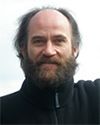From Imaging to Inversion
OR
About the Course
SEG members, view the course for free!
2012 SEG Honorary Lecturer Europe. Hydrocarbon exploration has many phases: from the heavy engineering aspects of the rig building and drilling industries, to the geological interpretation and attribute analysis of oil company geologists and rock physicists. However, underpinning all this activity is geophysical signal processing, which produces, as a final product, a 3D image of the subsurface of the Earth and related attribute volumes. This image is then used by rock physicists and engineers to infer what fluids are present in the rock formations, and by geologists to decide where to drill exploration wells.
Since the late 1970s, geophysicists have constructed images of the Earth's subsurface by estimating the speed of sound in the different rock layers, and using this information to reposition seismic data recorded on the Earth's surface, back to the subsurface reflecting surfaces to form a seismic image. This latter process is called migration.
In writing a migration algorithm, it is possible to make many simplifying approximations, so that forming an image becomes a tractable problem for the available computer power. However, to form the image, the migration algorithm needs a good estimate of the velocity of sound in the various subsurface rock layers, and there are many techniques for estimating these velocities.
In this talk, I'll review these aspects of contemporary imaging, and introduce some emerging ideas which perhaps seem to promise circumvention of the current two-step imaging procedure of velocity model building followed by migration, so as to estimate subsurface reflectivity, velocity, density and absorption parameter fields directly from the recorded data. This emerging technology is known as full waveform inversion.
Your Instructor

Ian Jones received a joint honours BSc in Physics with Geology from the University of Manchester, UK, in 1977, an MSc in Seismology from the University of Western Ontario, Canada, and a PhD in Geophysical Signal Processing from the University of British Columbia, Canada, in 1985.
After working for Inverse Theory & Applications Inc. in Canada for two years, he joined CGG, where for 15 years he was involved in R&D in the London and Paris offices. Since 2000 he has been with ION GX Technology, as a Senior Geophysical Advisor in their London office.
He has published various articles on imaging related topics, and was co-organizer of: the 1998 SEG-EAEG summer research workshop entitled Depth Imaging of Reservoir Attributes, the 2002 EAGE workshops on Kirchhoff versus Wave Equation Imaging and High Resolution Velocity Estimation, and 2010 SEG summer research workshop on Subsalt Imaging. He was the instructor of the 2004 and 2008 SPG one-day workshops on Depth Imaging, and also for the EAGE and SEG continuing education courses on Velocity Model Building.
His current interests include velocity model building and migration, and his most current activity includes writing the text book ‘An introduction to velocity model building' published by the EAGE in 2010; and co-editing the SEG Geophysics Reprints series volumes Classics of Elastic Wave Theory and Pre-Stack Depth Migration and Velocity Model Building.
He is a member of the SEG, EAGE and the PESGB; serves on the SEG editorial committee and the EAGE OGGD and technical program committees, is an associate editor for Geophysics and also Geophysical Prospecting, and was awarded the EAGE's Anstey Medal in 2003 for "contributions to the depth imaging literature", and made the SEG 2012 Honorary Lecturer for Europe, for "contributions to advancing the science and technology of geophysics".
